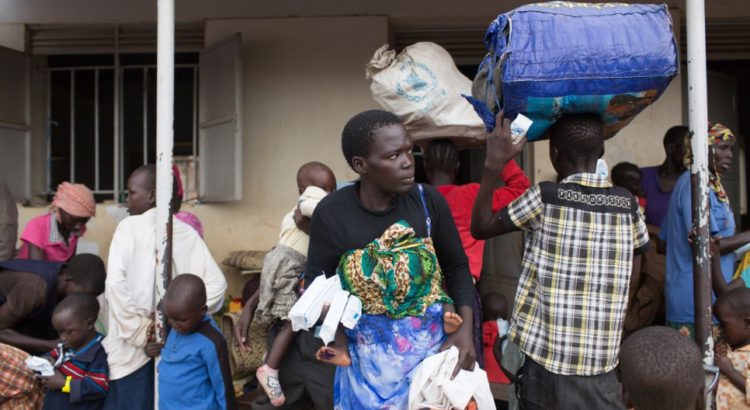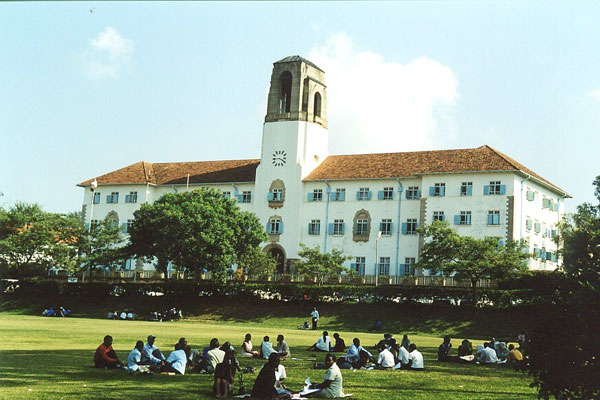Uganda / 13 de agosto de 2016 / Fuente: http://www.nation.co.ke/
Sadly, when we mention “burning” in connection with education today, we inevitably think of the burning of schools. How did we get to this pathetic state of pyromania, the psychopathic obsession with the lighting of fires or, simply, arson?
Anyway, there was a time, not so long ago, when many students and teachers were on fire for education. Of the teachers, two of my dear friends are vividly on my mind this week. These are the “Nakuru pair” of Afraha’s Lawrence Mukiibi and Kabarak’s Kasigwa Barnabas
Professor Mukiibi is the founding President of Uganda’s Saint Lawrence Schools and University network. He is currently undergoing treatment in Nairobi following an accident he had on that notorious Kampala-Masaka Road that one of our columnists has described as a highway to hell.
Long before he became a giant of East African education, however, Mukiibi was a teacher and later a headmaster at Nakuru’s Afraha High School. I think I narrated to you once how his students used to tease him, behind his back, about “Mukibi’s Educational Institute for the Sons of African Gentlemen”. That of course is the fictitious setting of Barbara Kimenye’s “Moses” stories. We will return to it later.
While Mukiibi was toiling at Afraha, Kasigwa, the drama magician, was labouring, mostly, at Kabarak High. But Kasigwa’s brilliant Kenyan teaching career did not begin at Kabarak. Indeed, we prefer to identify his scintillating production, The Trials, which won the 1979 Schools Drama Festival National Finals, as the turning point in his career.
Kasigwa was at that time English master at Kaaga Girls in Meru, and it is there that our former President’s talent scouts spotted him and recruited him for Kabarak. As is well-known, the Teacher-President was bent on building and developing educational centres of excellence in selected locations, like Kabarak.
In fact, Kasigwa was only one among many outstanding teachers to be so specially deployed. Several other Ugandan acquaintances of mine, some former classmates and others former students, were transferred from places as far-flung as Ngandu (currently Bishop Gatimu) in Karatina and Mulango Girls in Kitui to those centres of excellence.
ONE WITH STUDENTS
Moreover, Kasigwa did not shine only as a dramatist. He was, maybe even more importantly, an excellent teacher of English and Literature, with consistently impressive results to prove it. The same can be said of the others who were similarly hired.
Those who are old enough will recall that the Idi Amin terror brought a flood of Ugandan professionals to Kenya in the mid-1970s. They were, technically, not refugees until the collapse (or shall we say the dormancy) of the old East African Community in 1977.
Many of these were teachers and they were readily taken on by both public and private schools all over the country. But also many others who could not be absorbed into their former professions took to teaching, for economic survival. Several of these, too, turned out to be exemplary educators in their own right.
Indeed, most Kenyans at the top of their careers today will probably remember at least one Ugandan teacher who scribbled on the board before them at high school. Professor Martin Njoroge, the Academic Deputy Vice-Chancellor at the Panafrican Christian University, and my co-author, with Professor Angelina Kioko, of Spot On Writing Skills, remembers one such teacher.
On a scholarly assignment to Uganda some two years ago, Prof Njoroge asked me about his teacher, a Brother Nsubuga (I believe). I directed him to an institution where I thought they would know the whereabouts of the gentleman, and Prof Njoroge duly stopped by to enquire. Sadly, he was told, Mwalimu had since journeyed to the after-world.
Anyway, Ugandan teachers were so popular in Kenya at one time that it was common for school owners to ask us if we could find them a teacher — “from out there, you know”. The truth of the matter was that these teachers were not that good simply because they were Ugandan. There were three main reasons why many of them performed so wholeheartedly.
First, they took their hiring very gratefully as a lifeline that had been thrown them after the traumatic experiences that had forced them to flee their motherland. Secondly, the Ugandans were relatively free from the many distractions that troubled, and still beset, their local colleagues. The Ugandans did not have to attend to distant shambas or run kiosks and matatus in order to support extended families.
But most importantly, especially, in the case of the professional teachers from Makerere’s School of Education, like Kasigwa and Mukiibi, they were brought up on a fundamental requirement of a good teacher. This is what their teachers, like Bernard de Bunsen, Chris Lucas and Charles Pratt, called a “passionate attachment to your learners”.
The most intimate secret of good teaching and educational administration, as Kasigwa and his colleagues knew and demonstrated, was that ability to be “completely at one” with one’s students or pupils. The students are not a bother. They are not a mob, they are not a job. They are your life.
It will be two years next week since Kasigwa departed from us. I had wanted to recount to you a few anecdotal stories that he shared with me, including the time he “broke loose” from Kabarak. There was also his having to slash grass to earn his school fees at Saint Bernard’s High School, the probable inspiration of Kimenye’s “ Mukibi’s Educational Institute for the Sons of African Gentlemen”.
Now, Saint Bernard’s was founded by Bernard Kakinda, another gentleman with a burning passion for education. He also happens to be the father of Mwalimu Mukiibi of the Saint Lawrence Schools and University fame. Maybe you can see the link between Afraha’s Mukiibi and Kabarak’s Kasigwa.
Meanwhile, maybe their former students, and all the Kenyan educationists who remember other such teachers with a passion, should try and revive this spirit.
It would be a contribution to countering the young people’s burning anger that leads to the torching of our schools.
Fuente noticia: http://www.nation.co.ke/lifestyle/weekend/AUSTIN-BUKENYA-legacy-of-Ugandan-teachers/1220-3342672-9pcntz/index.html














 Users Today : 89
Users Today : 89 Total Users : 35460106
Total Users : 35460106 Views Today : 110
Views Today : 110 Total views : 3418741
Total views : 3418741